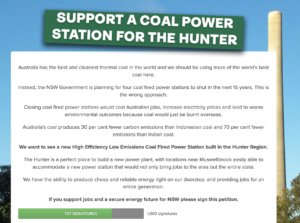There’s a new kid on the block: nature-based solutions. Child prodigy or juvenile delinquent? Fossil fuel producing nations need to show more application. AIHW examines the health effects of last summer’s bushfires and the NSW electricity plan graduates with a distinction. China could try harder to protect wild animals.
‘Nature-based solutions’ is a term that has entered the climate activism lexicon in recent years. Although the concept is still evolving, it refers to ‘actions to protect, sustainably manage, and restore natural or modified ecosystems, that address societal challenges effectively and adaptively, simultaneously providing human well-being and biodiversity benefits’. Examples might make that mouthful clearer:
- Protecting and restoring forests stores carbon, preserves biodiversity, stabilises soil and slows water run-off;
- Expanding greenspace, increasing tree cover and restoring watersheds in and around cities lowers heat and reduces flood risks;
- Protecting and restoring mangroves, marshes and reefs buffers coasts from storms, stores carbon, preserves biodiversity and absorbs floodwaters.
When successful, nature-based solutions (NbS) can provide integrated benefits across a range of dimensions, e.g., water, food, energy, health, climate change mitigation and adaptation, biodiversity and the economy. While the private sector and communities have clear roles in NbS, only national and state governments and intergovernmental organisations have the political power and resources necessary to implement NbS at the required geographic scale and over long enough time periods. That is why a recent report has focused its NbS recommendations on the G20 nations:
- Adopt a three-fold approach to action: Protect the most biologically-diverse, carbon-dense ecosystems: Restore the ecological integrity and economic productivity of degraded ecosystems; Connect land and marine natural ecosystems to maximise synergies;
- Prevent further harm to the natural environment: ‘The first and most important NbS is to slow the relentless assault on nature’;
- Protect and strengthen the ecological integrity of natural ecosystems;
- Make primary forests and coastal ecosystems the highest priority areas;
- Ensure at least 30% of the Earth’s surface is in protected areas by 2030;
- Recognise the rights of Indigenous Peoples and local communities;
- Repurpose public subsidies towards activities that conserve nature and promote NbS, particularly in the post-pandemic recovery.
The report recognises that NbS is not without its critics – indeed, there are vigorous debates within the environmental movement about the degree to which environmental organisations should support NbS. At a practical level, there is justifiable concern that companies and governments will promote NbS to cover up their lack of action on mitigation and/or will maximise financial returns over environmental benefits, with tree planting particularly vulnerable to scams and exploitation. More philosophically, there is concern that NbS commodifies nature, emphasising its economic rather than its intrinsic value.
To finish with one astonishing gobbet of information from the NbS report, 70% of forest is now less than 1km from a forest edge.
Here’s another example of an NbS but you have to suspend your cynicism for three minutes and focus on the important message – pollinator-friendly solar farms can be good for the solar farm, the surrounding farmers, biodiversity, bees and apiarists. If, however, the BP schmaltz is too much for you, have a look at this pollinator-friendly solar scorecard that has been developed to combat the greenwashing that is almost certain to accompany roll out of this idea.
The UN Environment Program (UNEP) has released its second Production Gap report, the report that identifies the gap between what coal, oil and gas producing countries plan to produce in the next ten years and what they’d need to produce to keep global warming under 1.5oC. The bottom line is that there needs to be a 6% per year reduction of production between now and 2030 but the countries are planning a 2% per year increase, with governments so far committing 50% more COVID recovery funds to fossil fuels than to clean energy. For a little more information you have a choice between the written word, a video (under 2 minutes) and an animated infographic (1 minute). The report recommends six areas of action to governments: use COVID recovery funds to support the achievement of climate goals; support fossil fuel dependent communities to make a just transition away from fossil fuel industries; reduce government support for fossil fuels; restrict new fossil fuel production; make fossil fuel production levels transparent; and act collectively.
The Australian Institute of Health and Welfare has produced a report on the short-term (September 2019 to March 2020) health effects of the 2019/2020 bushfires. Briefly:
- 33 deaths as a direct result of the fires but no change in the overall number of deaths during the bushfires;
- Increased presentations to Emergency Departments (ED) in NSW for respiratory problems, especially in areas most affected by the fires;
- Large increases in prescriptions and sales of inhalers for shortness of breath;
- More than half of adults felt anxious or worried directly after the fires and bushfire-related calls to Lifeline increased but no increase in presentations with anxiety to EDs; perhaps people sought help elsewhere or had difficulty getting to hospitals or felt nervous about leaving home;
- No increase in presentations to EDs in NSW for cardiovascular problems or dehydration;
- Presentations to GPs dropped, particularly in fire-affected areas.
Tim Buckley, who to the best of my knowledge has not been noted for being a spruiker for the energy policies of the current or previous NSW governments, has delivered an extremely favourable opinion on the recently released NSW Electricity Infrastructure Roadmap. The roadmap, approved with (nota this bene!) bipartisan support in the NSW Parliament, promises to deliver the electricity holy trinity: lower cost, reliability and low emissions. Buckley’s summary: ‘The NSW Electricity Infrastructure Roadmap is exceptionally well thought through. […] The employment, export and investment opportunities are huge. Consumers will benefit. Downstream industry will be rejuvenated after a decade of fossil fuel-driven energy cost inflation.’ To avoid accusations of parochialism, part of my reason for covering the NSW electricity plan is that it has serious implications for other states and territories. Buckley’s piece also includes this pithy image: ‘aluminium is little more than alumina and solidified electricity’.
A propos of nothing, the picture below is worthy of a Christmas cracker. Well, someone’s got to be joking.
They may look like reptiles but pangolins (or scaly ant-eaters) are mammals, the only ones that are covered with scales. They are also the most trafficked mammal in the world, highly valued in some Asian countries, particularly China, for ornament and the alleged medicinal qualities of their scales, meat and organs. Although the Chinese government claimed earlier this year, in response to the COVID pandemic, to have removed pangolin scales from traditional medicines, this is far from correct. Over 200 companies are still licensed to sell pangolin scale products. Over 60 companies still list pangolin as an active ingredient in their products. Over 50 companies are actively advertising medicines claiming to contain pangolin. The Chinese government says that the scales come from a national stockpile – a stockpile that probably serves as a smokescreen for ongoing illegal activity and may never run out. Unfortunately, pangolins are just one of several threatened wild animals – e.g. leopards, tigers, bears, rhinos, elephants – that are legally traded, and often bred in appalling conditions in captivity for their body parts, in China.
Peter Sainsbury is a retired public health worker with a long interest in social policy, particularly social justice, and now focusing on climate change and environmental sustainability. He is extremely pessimistic about the world avoiding catastrophic global warming.



Comments
2 responses to “Sunday environmental round up, 6 December 2020”
1. Fortunately the planned 2% increase in production of fossil fuels is like the perennial announcements in the car industry that “with the new model Wowser XT we plan to increase production and sales by 20-30%”. Almost never happens.
2. It may well be that transport emissions have peaked as electrification and virtual meetings combined will take the edge off transport, while Toyota is lagging, Volkswagen, General Motors, Puegot/Citroen/Fiat, Ford and Renault/Nissan/Mitsubishi have recently accelerated their EV time lines. In households with an EV and an ICE vehicle the EV tends to be the first preference vehicle. In transport it turns out that most truck and van journeys are less than 200 km and that is quite economical to electrify even with today’s battery technology
2. Nature based solutions including regenerative agriculture can be very fast acting. A new forest probably starts absorbing CO2 in the first couple of months and reaches maximum uptake in 5-15 years depending on the species. Regenerative farming can start to show results in 2-3 years. While scepticism is justified, the damage done to environmental causes by perfectionists rejecting the imperfect vastly outweighs the damage done by “green-washing” which at worst partially delays progress for a few years.
3. With a bit of luck emissions in the power sector will fall even faster than generation from coal and gas because the least efficient/most polluting plants will be phased out first. Around the world rising energy efficiency is reducing energy demand in most developed countries and renewable generation is actually rising faster than expected. Probably by 2023 half of Europe’s electricity will be from renewables and Australia won’t be far behind, while China, India, Korea and Japan are also reducing the coal share at an accelerating rate
Excellent article.
Regarding “‘Nature-based solutions’ is a term that has entered the climate activism lexicon in recent years. Although the concept is still evolving, it refers to ‘actions to protect”, it is not always clear whether the time factor is taken into account? By the “magic date” of 2050 the combined greenhouse level would be <600 ppm CO2-equivalent (a value which includes methane and nitrous oxide), above the melting treshhold of Greenland ice sheet and large parts of the Antarctic ice sheet, with global consequences in terms of sea levels.